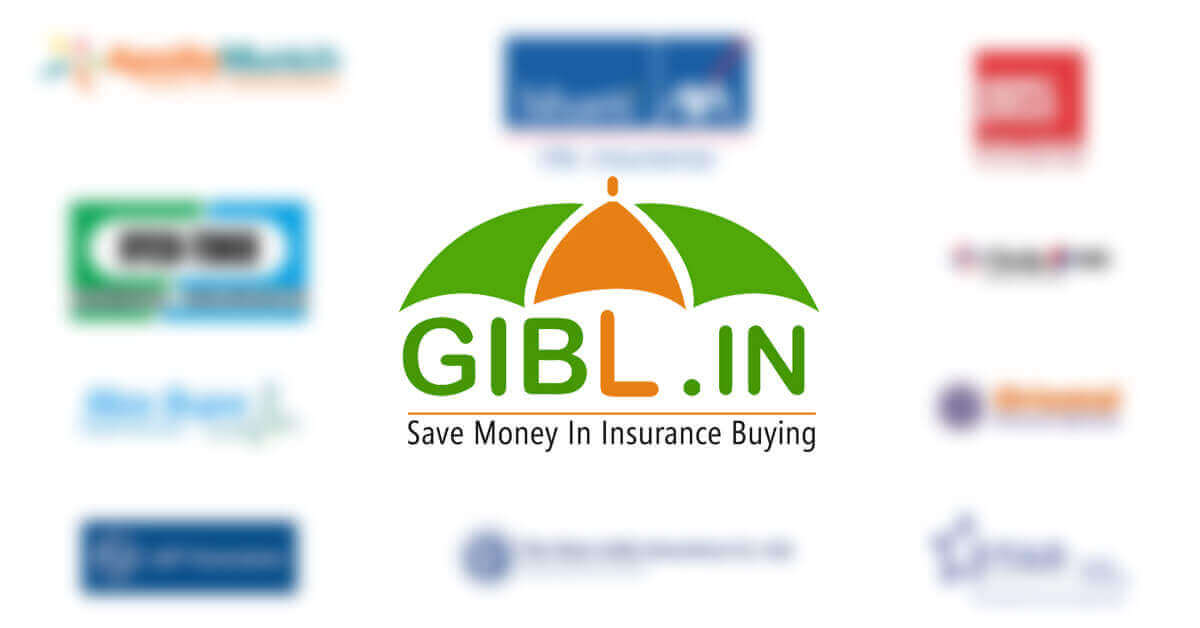Health Insurance is no longer a strange phenomenon in Indian households. To combat skyrocketing medical expenses, most people are resorting to various health insurance plans in India with different coverage. Usually, policyholders in India opt for a coverage of Rs 3-4 lakh for an individual cover and Rs. 7-8 lakh for a family cover. However, medical insurance plans with such coverage not always suffice owing to the rising costs of hospitalization. Aside from the inadequate sum insured amount, normal health policies also lack in offering coverage to all sorts of expenses. Especially, during the recovery phase basic health covers hardly provide any coverage towards expenses for nursing care, physiotherapy, rehabilitation, diagnostic tests and follow-up medical check-ups.
If you already are armed with a base health cover you can consider availing Top-Up health plans and riders in order to stay financially protected from all possible medical expenses. Let's gather substantial information about these two types of options that health insurance companies in India has in store for policyholders.
What is a rider?
Riders are essentially amendments or attachments to health insurance policies that already exist. These riders are designed to look after specific issues and they are known by the type of coverage they offer. For an instance, a rider called Hospital Cash is meant to offer cash on daily basis during the hospitalization to cover medical costs. Riders are also known as add-on covers and they help reduce out-of-pocket expenses of policyholders significantly if the base policy falls short to provide adequate cover. However, all riders are not available with all health policies as its availability depends on the health insurers. Here is a list of major riders available in India's health insurance niche;
-
Critical Illness Cover
-
Hospital Cash Benefits
-
Personal Accident Cover
-
Maternity Cover
-
New Born Baby Care
Maternity Cover
This rider covers maternity expenses during the process of child birth. However, the coverage comes into effect only after a waiting period which depends on the plan taken and the health insurer. If you go for this rider you would have to shell out 15-20% more on premium.
Critical Illness Cover
Critical illness refers to fatal diseases like kidney failure, tumor, cancer, organ transplant. This rider can be taken as a standalone cover or you can also opt for this as an add-on in your base plan. The rider provides policyholders with immediate and one-time lump sum amount regardless of the actual expenses for medical treatment. Some health insurance companies in India offer rider that covers 10-12 critical ailments, but some health insurance providers offer critical illness rider that covers as many as 38 critical illnesses.
Hospital Cash
Hospital cash rider provides for the daily cash that you need to meet medical expenses during the period of hospitalization. However, you have to remain hospitalized for at least 24 hours to make a claim. Usually, People claim between Rs. 500 and Rs. 3,000 but if you get admitted in ICU you have to pay higher room rent and thus you can claim higher amount.
How much do these riders cost?
Riders help one stay protected against specific health risks at a low cost. If you avail any rider you have to pay for it over the premium of your base health plan. IRDAI has put a cap on the upper limit on health insurance riders' premium at 30% of the basic plan.
Riders that are available as standalone policies cost more than the ones taken as add on covers to an existing health insurance policy. For example, the premium for a standalone personal accident policy with a sum assured of Rs 3 lakh will cost around Rs 500-Rs.600 per year.
Making a wise purchase of health insurance riders
It is wise to buy multiple riders to strengthen your base health cover from various eventualities. While buying one, you need to be very clear of your needs and what is already available in your existing health plan. For an example, if you are married and planning a child, maternity cover is a good rider to choose. But, if your base plan covers maternity related expenses you need not to spend money for a rider that offers same coverage.
Now that your concept about health insurance riders or add on covers is crystal clear, lets discuss another option for you which is known as top-up plans.
What is a top-up health policy?
Top-up plans are indemnity plan that covers hospitalization expenses when the existing health cover exhausts its maximum limit. In simple words, top-up policies offer additional coverage for those who have bought individual plan or provided with group mediclaim cover from their employer.
Top-up policies come into play when the threshold limit is reached. These limits are known as deductibles that you have to pay. Since insurers don't pay the deductible amount top-up plans are relatively cheaper.
How these Top Up Plans work?
Suppose, a person has a normal indemnity cover of Rs3 Lakhs and is hospitalized. If the treatment cost goes past the limit of Rs 3 Lakhs and finally ends up over 5 Lakhs you have to arrange for the additional amount of Rs2 Lakh from other source such as your own savings.
But, you can effortlessly meet this additional cost if you are armed with a top-up plan. If you avail a top up health policy that comes with a Sum Insured of Rs10 Lakhs with a deductible of Rs3 Lakhs any amount over the limit of Rs 3 Lakhs will be covered. In the given example, the additional Rs 2 Lakh will be taken care of by your Top Up Plan.
You can opt for a standalone top up plan but it is not very wise to do so. In case the treatment costs don't go past the deductible amount, you have to arrange for money from other sources again if you are not covered by a regular health policy. So, your best bet is a top-up cover alongside a regular health insurance plan. If you are provided with health cover by your employer you can also enhance it by availing a top-up policy.
How much does a top-up cover cost?
As mentioned earlier, top-up plans are cheaper compared to regular health insurance plans. For an example, a normal health policy called Health Guard offered by Bajaj Allianz General Insurance costs Rs 10,913 for a coverage of Rs 10 lakh for a 30-year old. But, the top-up plan called Extra Care offered by the same insurer costs just Rs 2,500 for the same coverage for Rs 3 lakh deductible. Hence, a top-up policy costs less but offers so much more when the expenses go beyond the coverage limit of the base health policy .
Riders or top-up plans – which one is more beneficial?
Now that you are aware of the features and benefits of top-up plans, you might be caught in two minds while choosing between the two. So, here is a comparative study to highlight the pros and cons of these two types of health covers.
|
Rider or add-on cover |
Top-up policy |
|
No medical check-up up to 45 years |
No medical check-up up to 55 years |
|
Coverage available for only a few serious diseases |
Coverage available for all treatment costs due to hospitalization |
|
Riders belong to particular policies and can be taken only with them |
Top-up plans are independent covers that can be bought separately from the existing policy |
|
Regular health insurance plans and riders cannot be bought from different health insurers |
Regular health insurance plans and top-up covers can be bought from different health insurers |
Limitations of top-up plans
-
The very first condition is the top-up plan comes into effect after a certain and specified threshold limit.
-
If you have two health policies; one is a regular health plan and the other is a top-up plan from two different health insurers, each insurer is supposed to pay out claim as per their respective coverage for a single event hospitalization. Top-up plans works only in the event of a single hospitalization.
What does single hospitalization mean?
The top-up plan is effective only when the insured person gets hospitalized once for a single illness. In case, the illness relapses within 45 days after discharging, it is also considered single illness. But, if the insured person gets hospitalized again after 45 days from discharge for the same illness, it doesn't considered as single illness. In order to reap the benefits of a top-up plan, the expenses has to go past the deductible amount for every single illness. However, there are some top-up plans that can be used for any ailment for the whole year once the deductible amount is crossed. These top-up plans are called
super top ups.
Picking the right top-up plan
If you opt for the higher deductible, you have to pay less for your top-up plan. The reason why one avails top-up health plans is to cover the gap between the coverage of existing health policy and actual medical expenses. Since you are looking to enhance the current cover at a nominal cost, you need not to worry about what is being covered as your base health insurance policy will take care of that. The most vital part is to have a proper understanding of the criteria for single illness. Apart from this, you need to check out the following factors to select the right top-up health plan;
-
What is the waiting period for pre-existing diseases?
-
What are the limits for pre- and post-hospitalization expenses, donor expenses?
-
Does the plan come with per-claim deductible clause or overall deductible clause?
-
Does the policy include parents?
Conclusion
Both top-up plans and riders or add-on covers have their own set of benefits and downsides. In case you are unable to choose between the two you need to assess your future medical expenses. If you can estimate the future cost of treatment, you should go for an add-on cover. But if you cannot make such assessment your best bet would be a top- up plan. However, there is no harm if you opt for both riders and top-up covers in case the coverage amount of your regular health insurance policy is insufficient. To grab an add-on cover or a top-up policy without any hassle you can resort to GIBL.IN, the premiere online insurance marketplace in India.











